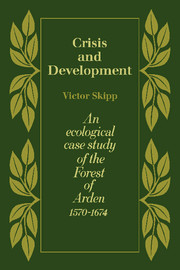Book contents
Summary
The contiguous parishes of Elmdon (1,127 acres), Sheldon (2,500 acres), Bickenhill (3,771 acres), Yardley (7,590 acres), and Solihull(l 1,296acres) occupy a tract of relatively low undulating land which is crutched between the River Cole and the River Blythe on the eastern flank of the Birmingham Plateau (Fig. 2). Formerly part of the Forest of Arden, this territory lay on the northern fringe of pre-Conquest agrarian development.
The primary settlement pattern consisted of small hamlets, some originating as Saxon vills, others as colonies founded in the post-Domesday period. By the time detailed documentation becomes available each hamlet is associated with an area of open- or common-field land, as is also the planted borough of Solihull, which was laid out by the lord of the manor of Ulverlei in the late twelfth century. The Warwick Road, however, marks the limit of common-field agriculture in northern Arden. South of this, extensive areas of Yardley and Solihull were cleared by private enterprise in the twelfth and thirteenth centuries, and so came to be characterized by private assarts in severalty. This meant that these two large parishes had a greater proportion of enclosed land than the others; and since severalties were held on free tenure, they also had a much higher proportion of freeholders. At Solihull in 1632 there were no less than 75 freehold, as against 5 copyhold and 9 leasehold tenures. At Sheldon and Bickenhill, by contrast, where common-field land had originally predominated, the majority of peasants held by copy.
- Type
- Chapter
- Information
- Crisis and DevelopmentAn Ecological Case Study of the Forest of Arden 1570–1674, pp. 5 - 9Publisher: Cambridge University PressPrint publication year: 1978



